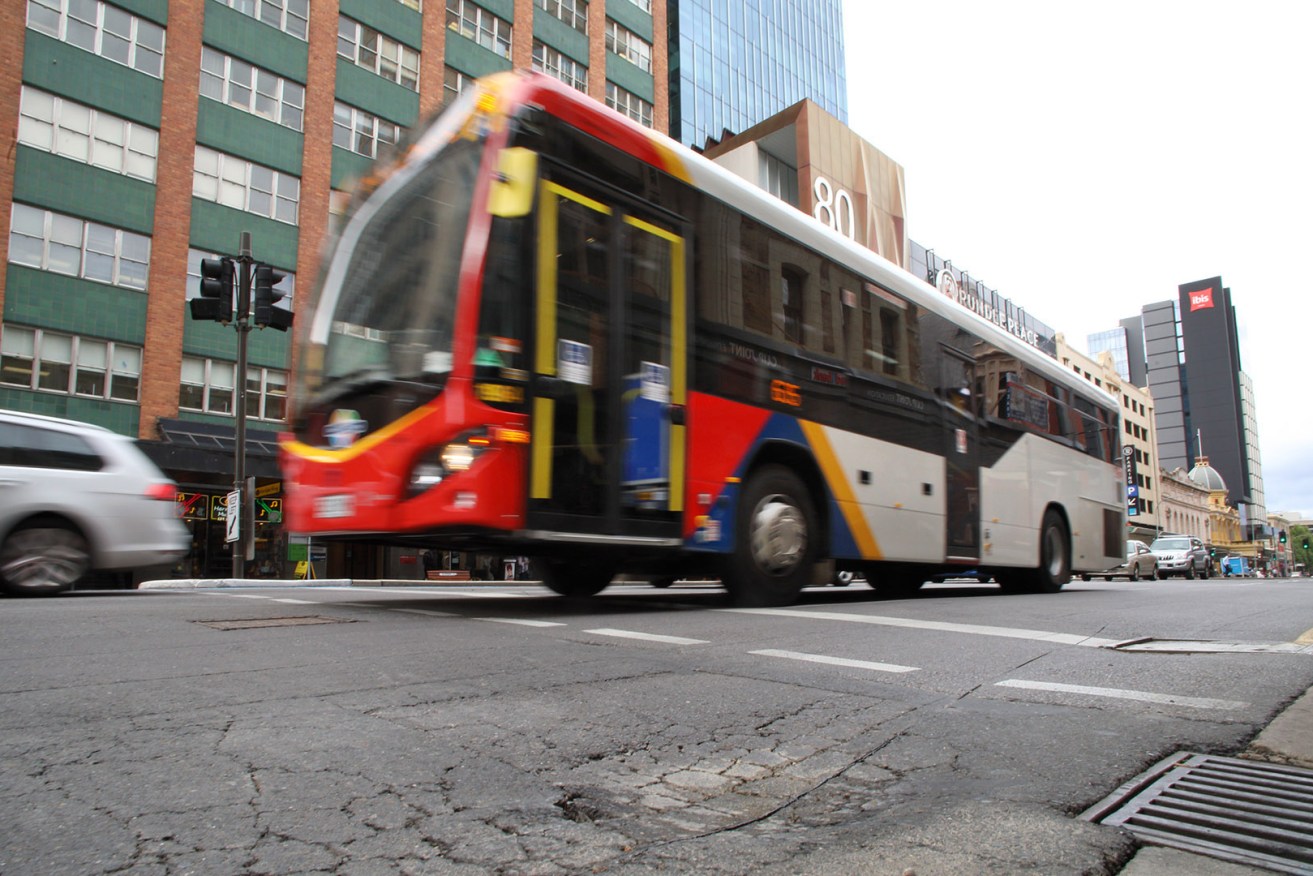Ringing the bell on Adelaide’s latest bus shake-up
Transport Minister Stephan Knoll’s bus changes promise faster service but they ignore other key passenger needs and could well backfire on the government, argues former senior public transport planner Tom Wilson.


Photo: Tony Lewis/InDaily
The most significant part of the State Government’s proposed massive changes to Adelaide’s bus network is the expansion of the Go Zone network, in which selected bus routes operate to at least a basic 15 minute frequency for much of the week.
Minister of Transport Stephan Knoll has been quoted as saying that “frequency was the No.1 issue for public transport commuters.”
I support the provision of more frequent services, and the government and bus contractor planners have developed some good ideas for a greater proportion of Go Zones. In the 2000–2010 period, significant patronage gains were made by increasing frequencies and expanding services – something encouraged by bus contractor incentive payments which are no longer available in that form.
I am very worried, however, that the contractors may have been encouraged to support the proposals in order to win the new contracts, so I wouldn’t blame the contractors for any withdrawal of services.
The big problem is that the Minister wants to do away with a number of bus routes, and supposedly some 500 bus stops, in order to pay for the new Go Zones.
He says that many more people will live within 800 metres of a Go Zone, and that this will mean faster travel for those people. This forgets the time and inconvenience (and impossibility for many) in walking the extra distance.
It is important to note that aside from the 500 stops to be removed, there will be many other bus stops that currently serve two or more routes (perhaps one to the city, one across suburbs), from which one of those routes will be withdrawn. Thus, many more than 500 stops will be affected.
From at least the 1950s the standard used for maximum walking distance to a bus route in Adelaide has been 400 metres, extended to 500 metres in the 1980s – a lot less than the Minister’s 800 metres.
A study carried out in a number of cities in the USA some years ago showed that few people living more than 200 metres from public transport used that service – a finding that is likely to be replicated in Australian cities.
… my examination of proposals indicates that very few Go Zone routes will be any shorter for the majority of users, and some will be longer than the existing ones.
People don’t complain much about public transport service coverage in Adelaide, because it is fairly good, so it has not been an issue noticed by the Minister. If, as part of the Government’s research, people had been told that they might have to walk a lot further to catch a public transport service, my experience is that service coverage would have been a major issue.
It seems quite incredible that, over the last 30 years, state and local governments have spent millions on making buses and trains fully accessible. What is the point of all that if people with mobility difficulties (including the many thousands of elderly people who use public transport) cannot walk or travel in their wheelchairs the extra distance from their home to the bus or train?
There will be many bus stops that have been upgraded by councils that will now be left without a bus. I hope that councils will leave the infrastructure in place for when the bus routes can be re-established.
In 1993, the State Transport Authority had expert market surveyors carry out a Customer Preference Study covering 1000 households. The study was to determine which aspects of service are most important to improve in order to increase the use of public transport, and to determine the relationship between improvements in service quality and increases in use.
The study came up with a total of 22 aspects of service that would influence people to use public transport. For bus services, frequency of service was number one in importance, while convenience factors – distance of the bus from the passenger’s origin (eg, their home), and distance of the bus from their destination (eg, the city) – were respectively numbers two and three in importance.
The Minister has made much of buses in the new system being able to travel faster, but two factors related to that, “Express most of the journey”, was No. 16, and “In-vehicle travel time” was No. 17, so bus speed is insignificant in comparison to frequency and convenience.
The Minister has said that the new network will provide faster travel, yet my examination of proposals indicates that very few Go Zone routes will be any shorter for the majority of users, and some will be longer than the existing ones.
If the buses now have too much running time, that can be adjusted on the existing routes – the routes don’t have to be changed to achieve a faster service. Just remember, though, that if any scheduled time is removed, the amount of bus late-running increases, because traffic congestion is incredibly variable.
If the Government cannot increase frequencies without making other cuts, the network must continue to be a compromise between frequency and convenience.
One wonders whether the concept of increasing walking distances has been foisted upon the planners, who would be trying to do their best, by decision-makers with little public transport experience. The plan does not recognise the many thousands of people without access to a car.
These considerations, and my personal experience with significant negative reactions by passengers to withdrawal of their nearby bus routes (strong criticism in letters and at public meetings, negative reactions by local MPs, and my boss almost getting the sack over one minor service withdrawal), show that the Government would be making a significant mistake if it embarks on a wholesale introduction of the proposed new network.
If you are a bus user, check the Adelaide Metro website to see if your bus route is to be maintained, and make a submission if you object. If you don’t understand the website, ring 1300 311 108.
Tom Wilson is a retired senior public transport planner, who worked for the State Government from 1973 until 2010 and was heavily involved in the development of Adelaide’s existing bus network.
Want to comment?
Send us an email, making it clear which story you’re commenting on and including your full name (required for publication) and phone number (only for verification purposes). Please put “Reader views” in the subject.
We’ll publish the best comments in a regular “Reader Views” post. Your comments can be brief, or we can accept up to 350 words, or thereabouts.




